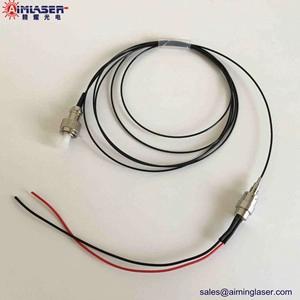The fusion of laser technology and welding technology realizes a non-contact welding method, which uses a small amount of heat input and a small heat affected zone to weld multi-layer metals. At the same time, it has the advantages of intelligence, automation, integration, small welding seam, small deformation, high efficiency and good weld performance, etc., and has been rapidly applied in automobile manufacturing, aerospace, shipbuilding and other fields. On the one hand, by using laser welding instead of the original rivet riveting technology, the deadweight of the product is reduced, the cost is saved, and the product quality is improved; On the other hand, the welding efficiency is improved by using the rapid welding characteristics of laser.
There are many factors that affect the quality of copper/aluminum laser welding, including the welding limitation caused by the characteristics of the material itself, as well as the influence of welding technology and welding methods. The quality of copper/aluminum welded joints can be effectively improved by selecting appropriate laser, laser processing parameters and designing welding methods.
Laser welding can be divided into CO2 laser, semiconductor laser, YAG laser and fiber laser according to the working medium. First, semiconductor lasers are mainly used in information fields such as medical treatment, printing, optical communication and optical storage. However, the high-power semiconductor laser will be damaged, burned or even burned out when it is continuously output at high current, so it is difficult to be used in industrial processing that requires high-power energy output. Secondly, CO2 laser has high electro-optical conversion efficiency and output power, but its emitted light wavelength is long, while copper/aluminum metal has high reflectivity, which is not conducive to the realization of efficient laser processing. Thirdly, the working medium of YAG laser is ruby, Nd glass and Nd-doped yttrium aluminum garnet, and the working medium of fiber laser is optical fiber, whose reflected light wavelength is 1/10 of that of CO2 laser, which is widely used at present. Both of them have advantages and disadvantages in welding processing. YAG laser has high coupling efficiency with metal, good processing performance, and can conveniently transmit a laser beam to a plurality of remote stations, which is convenient to realize flexibility, and can also realize pulse and continuous working modes, but its use and maintenance costs are high. The electro-optic efficiency of fiber laser is over 20%, which is far higher than that of YAG laser. It has the characteristics of adjustment-free, maintenance-free, high stability, simple structure and small occupied area, but its relative stability is difficult to guarantee. Now, both lasers are suitable for copper/aluminum laser welding. It should be noted that in order to prevent the high reflectivity of copper and aluminum to laser, sometimes the surface of copper/aluminum needs to be polished before the test.
communication and optical storage. However, the high-power semiconductor laser will be damaged, burned or even burned out when it is continuously output at high current, so it is difficult to be used in industrial processing that requires high-power energy output. Secondly, CO2 laser has high electro-optical conversion efficiency and output power, but its emitted light wavelength is long, while copper/aluminum metal has high reflectivity, which is not conducive to the realization of efficient laser processing. Thirdly, the working medium of YAG laser is ruby, Nd glass and Nd-doped yttrium aluminum garnet, and the working medium of fiber laser is optical fiber, whose reflected light wavelength is 1/10 of that of CO2 laser, which is widely used at present. Both of them have advantages and disadvantages in welding processing. YAG laser has high coupling efficiency with metal, good processing performance, and can conveniently transmit a laser beam to a plurality of remote stations, which is convenient to realize flexibility, and can also realize pulse and continuous working modes, but its use and maintenance costs are high. The electro-optic efficiency of fiber laser is over 20%, which is far higher than that of YAG laser. It has the characteristics of adjustment-free, maintenance-free, high stability, simple structure and small occupied area, but its relative stability is difficult to guarantee. Now, both lasers are suitable for copper/aluminum laser welding. It should be noted that in order to prevent the high reflectivity of copper and aluminum to laser, sometimes the surface of copper/aluminum needs to be polished before the test.

The welding parameters include welding focus position, laser output power, welding speed and welding frequency. The higher the laser output power, the slower the welding speed, the more energy absorbed by the material, the faster the melting of the material and the higher the welding efficiency. However, too high welding energy may lead to overheating of the material and welding failure. For the welding of copper/aluminum dissimilar metals, fusion welding is usually the main method. The more welding energy is absorbed, the more brittle materials are generated by the reaction between copper and aluminum, and the worse the welding quality is.
Direct welding of copper/aluminum is easy to produce brittle cracks. Adding materials or plating between copper/aluminum materials can affect the formation of copper/aluminum binary interphase and improve the welding quality. With the addition of appropriate amount of silver, the rodent Al-Al2CuAg2Al ternary eutectic phase is formed in the molten pool area on the copper side, which effectively improves the formation and welding quality of the copper/aluminum laser welding seam. Compared with that without silver foil, it is increased by nearly 1/3.